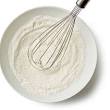Cassava flour holds a cherished place in Nigerian cuisine, serving as a staple ingredient in various dishes. Its versatility and nutritional benefits make it a cornerstone in many households across the country. Learning to make cassava flour at home not only ensures freshness but also allows for quality control, ensuring you get the best out of this essential ingredient.
In this comprehensive guide, we will walk you through the process of making cassava flour step-by-step, from selecting the right cassava roots to storing the finished product. Whether you’re looking to save costs or simply enjoy the satisfaction of homemade flour, this guide is tailored to help you achieve the best results in your kitchen.
Stay tuned as we delve into the details of this traditional process that continues to enrich Nigerian culinary traditions.
What is Cassava Flour?
Cassava flour, derived from the tuberous root of the cassava plant, is a staple in many Nigerian homes. This flour is made by peeling, grating, drying, and grinding cassava roots into a fine, powdery consistency. It is known for its neutral flavor, making it a versatile ingredient in both savory and sweet dishes.
Cassava flour is particularly valued for its high carbohydrate content, providing a significant energy boost. Additionally, it is naturally gluten-free, making it an excellent alternative for those with gluten sensitivities or celiac disease. Its nutritional profile includes essential vitamins and minerals such as vitamin C, calcium, and iron, contributing to its health benefits.
In Nigeria, cassava flour is commonly used in making dishes like fufu, garri, and other traditional snacks. Its ability to blend seamlessly into various recipes without altering the taste makes it indispensable in local cuisine. As we explore this guide, you will see how easy and rewarding it is to create your own cassava flour at home, enhancing your meals with fresh, high-quality flour.
Benefits of Making Cassava Flour at Home
Making cassava flour at home offers several advantages that contribute to its popularity in Nigerian households:
- Cost-effectiveness: Producing cassava flour at home can be more economical than buying it commercially. It allows you to save money by utilizing locally grown cassava roots, which are often more affordable in local markets.
- Quality Control: Homemade cassava flour ensures freshness and purity. You have control over the sourcing of cassava roots and the processing methods, eliminating the risk of additives or preservatives that may be present in store-bought flour.
- Nutritional Quality: By making cassava flour yourself, you can ensure that it retains its natural nutritional benefits. This includes preserving vitamins, minerals, and fiber content that may diminish over time in commercially processed flour.
- Cultural Significance: In Nigeria, the tradition of making cassava flour at home is deeply rooted in cultural practices. It connects families to their heritage and provides a sense of pride in preparing meals using homemade ingredients.
- Sustainability: Producing cassava flour at home promotes sustainability by reducing packaging waste associated with store-bought products and supporting local agriculture.
By following our step-by-step guide, you can experience these benefits firsthand while mastering the art of making cassava flour in your own kitchen.
Ingredients Required
To make cassava flour at home, you’ll need the following ingredients and tools:
- Fresh Cassava Roots: Choose mature, healthy cassava roots without any signs of decay. Select roots that are firm and free from bruises for the best results.
- Water: Use clean, fresh water for washing and processing the cassava roots.
- Equipment:
- Knife: For peeling and cutting the cassava roots.
- Grater: A hand grater or a mechanical grater to grate the cassava into fine pieces.
- Drying Rack or Tray: For sun-drying the grated cassava.
- Milling Machine or Blender: To grind the dried cassava into flour.
- Sieve: For sieving the ground cassava to achieve a fine texture.
- Storage Containers: Choose airtight containers to store the finished cassava flour and keep it fresh for longer periods.
Ensure that all equipment and utensils are clean and dry before use to maintain the quality and hygiene of your cassava flour.
Step-by-Step Guide
Step 1: Harvesting and Peeling Cassava
Harvest mature cassava roots from your garden or purchase them from a local market. Look for roots that are firm, free from damage, and have a healthy appearance.
- Prepare the Cassava Roots: Wash the cassava roots thoroughly under clean water to remove any dirt or debris.
- Peel the Cassava: Use a sharp knife to peel the outer skin of the cassava roots. Ensure to remove all the brown outer layer, leaving only the white inner flesh exposed.
- Cut into Chunks: Cut the peeled cassava roots into smaller chunks to facilitate the grating process.
Step 2: Washing and Grating
- Wash Again: Rinse the peeled cassava chunks in clean water to remove any remaining dirt or sap.
- Grate the Cassava: Use a grater (manual or mechanical) to grate the cassava into fine pieces. Aim for a texture similar to coarse breadcrumbs.
Step 3: Drying
- Spread on Drying Rack: Spread the grated cassava evenly on a clean drying rack or tray. Ensure that the cassava is in a thin layer to facilitate even drying.
- Sun-Dry or Use Oven: Place the drying rack under direct sunlight to sun-dry the cassava for several days. Alternatively, you can use a low-temperature oven to dry the grated cassava until completely dry and crisp.
Step 4: Milling and Sieving
- Grind Dried Cassava: Once thoroughly dried, use a milling machine or blender to grind the dried cassava into a fine powder. Ensure to grind in batches if using a blender, and blend until smooth.
- Sieve the Flour: Pass the ground cassava flour through a fine sieve to remove any coarse particles and achieve a smooth, uniform texture.
Step 5: Storage Tips
- Cool and Store: Allow the cassava flour to cool completely before transferring it to clean, dry storage containers.
- Airtight Containers: Store the cassava flour in airtight containers to prevent moisture absorption and maintain freshness. Store in a cool, dry place away from direct sunlight.
By following these steps, you can successfully produce high-quality cassava flour at home, ready to be used in your favorite Nigerian recipes.
Tips for Success
Making cassava flour at home can be a rewarding process, but it requires attention to detail to achieve the best results. Here are some tips to ensure success:
- Choose Quality Cassava Roots: Select mature cassava roots that are fresh, firm, and free from any signs of damage or decay. Quality roots ensure a higher yield of good-quality flour.
- Thorough Washing: Wash the cassava roots thoroughly before peeling and processing to remove any dirt or residues.
- Proper Peeling Technique: Use a sharp knife to peel the cassava roots, ensuring to remove the outer brown layer completely without wasting too much of the inner flesh.
- Even Drying: Whether sun-drying or using an oven, ensure the grated cassava is spread evenly in a thin layer to promote even drying and prevent mold formation.
- Grinding Consistency: When grinding the dried cassava, aim for a fine, uniform texture to achieve smooth flour. Take care not to over-grind, which can lead to a coarse consistency.
- Sieve Effectively: Use a fine-mesh sieve to remove any coarse particles from the ground cassava flour, ensuring a silky smooth texture.
- Storage Conditions: Store the finished cassava flour in clean, airtight containers in a cool, dry place. This helps to maintain freshness and extend shelf life.
- Experiment with Recipes: Once you’ve mastered the basic process, don’t hesitate to experiment with cassava flour in various Nigerian recipes like fufu, baked goods, or snacks.
By following these tips, you can elevate your cassava flour-making skills and enjoy the benefits of homemade flour in your culinary endeavors.
Final Thoughts
Learning how to make cassava flour at home is not only a practical skill but also a way to connect with Nigerian culinary traditions. By following the step-by-step guide and incorporating our tips for success, you can produce high-quality cassava flour right in your kitchen.
Homemade cassava flour offers several advantages, including cost-effectiveness, quality control, and nutritional benefits. It serves as a versatile ingredient in Nigerian cuisine, enhancing dishes with its neutral flavor and smooth texture.
Whether you’re using cassava flour for traditional recipes like fufu and garri or exploring new culinary creations, the satisfaction of producing your own flour is unmatched. Embrace this traditional process, and enjoy the freshest cassava flour for your family and guests.
Start your cassava flour-making journey today and experience the joy of homemade goodness in every meal.
Visit our website to make informed career choices that align with your lifestyle.




